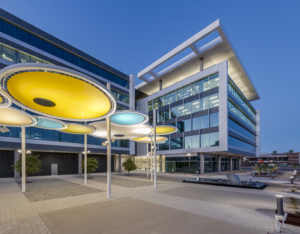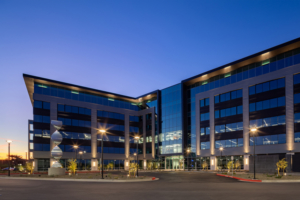The Cost Of Relifing A Building During The Age Of Environmental Thrift
Breath of Life – Relifing
Difficult financial times teach us that it is possible to do more with less, but also that doing more with less takes both thought and effort.
In 1965, Adlai Stevenson, then U.S. Ambassador to the United Nations, notably said, “We travel together, passengers on a little space ship, dependent on its vulnerable reserves of air and soil.” This phrase alerted the world to the necessity to preserve Earth’s natural assets and resources. However, it is only in recent times — with the discussion of climate change — that serious attention has been paid widely to the question of the use of scarce natural resources and the effect of that use on the environment. The world has entered an era in which using natural resources sparsely has become critical, perhaps even a cause célèbre — this is The Age of Environmental Thrift.
The construction industry has been making serious efforts to catch up by adopting sustainable design practices represented by the LEED certification system. However, traditionally there has been no systematically adopted, mathematical approach to test whether an existing building could be successfully “relifed” instead of being demolished. Clearly, relifing an existing building saves natural resources — it does more with less.
Life Options
For all building owners — especially those with large sophisticated healthcare facilities such as hospitals, clinics, etc. — it should be natural to start by asking the question, “Can we economically extend the life of our existing building by 5, 10 or 20 years instead of demolishing?”
The difficulty in the past was that there was no simple, definitive, mathematical way to determine a solution to this question. However, when the state of Arizona adopted the concept of studying relifing options through building life extension studies, it broke new ground in managing taxpayer funds. These studies have been conducted on many buildings, including laboratories and state hospital buildings, with good success.
A relifing study determines the “useful life” of a building by analyzing the cost and service life of its various components:
- structure
- external cladding
- internal fit-out
- building systems
From these components, a life expectancy may be calculated. The study then analyzes and prices recommendations for maintenance, upgrades, renovation and replacement of various building components necessary to extend the building’s life to certain milestones. When the analysis is compared with the cost of building a new structure, owners have a quantitative tool to determine which option will make the best use of their functional and financial resources.
Private sector clients would be well advised to follow the state’s lead. By measuring and analyzing the service life possibilities of each building and relifing those that can be saved, millions of dollars and thousands of cubic yards of natural resources can be saved. With more thought, more can often be done with less.
[stextbox id=”grey”]
[/stextbox]



